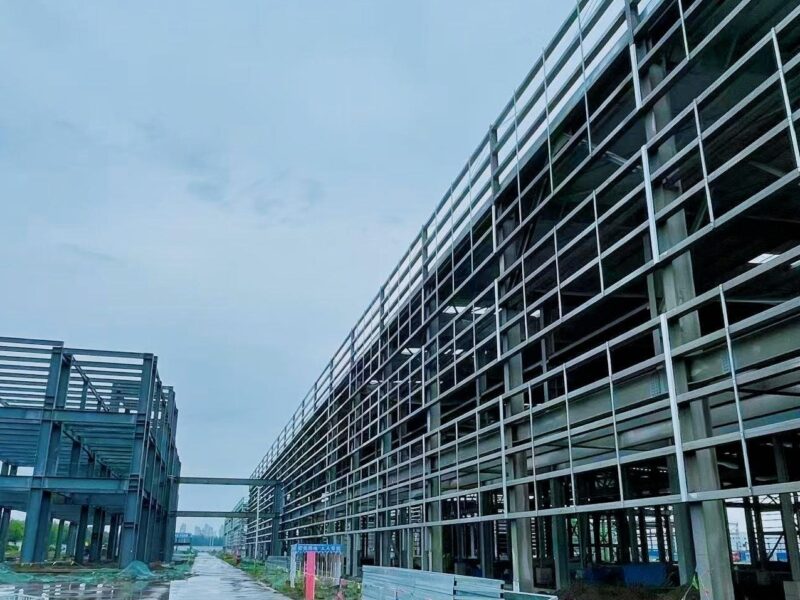
Modular Livestock Barns: Efficient, Sustainable, and Scalable Solutions for Modern Farms
In today’s rapidly evolving agricultural industry, efficiency and animal welfare go hand in hand. Farmers are no longer satisfied with traditional barns that require long construction periods, high maintenance costs, and limited flexibility.
Modular livestock barns are revolutionizing modern farming with faster construction, customizable layouts, and enhanced durability. Built using prefabricated steel and advanced modular systems, these barns help farmers improve productivity, animal health, and operational scalability—key factors for success in global agribusiness.
Why Modular Barns Are Changing Farm Construction
Conventional barns built with wood or concrete are expensive to maintain and difficult to expand. Modular construction offers a smarter solution by allowing farmers to design, build, and modify facilities faster and more efficiently.
Each barn section is prefabricated in a factory, transported to the site, and assembled in days rather than months. This minimizes downtime and ensures consistent quality across every unit.
Key Advantages of Modular Livestock Barns
- Rapid Installation
Prefabricated components significantly shorten construction timelines. Large-scale barns can be completed in weeks, allowing faster occupancy and production starts. - Improved Animal Welfare
Modular barns can be designed with optimal ventilation, lighting, and insulation systems to create a stable and comfortable environment for livestock. - Scalability and Flexibility
Farmers can easily expand or reconfigure barns as herd sizes grow. Modular sections can be added or relocated with minimal disruption. - Durability and Hygiene
Steel-framed modular barns are resistant to corrosion, moisture, and pests. Smooth wall panels make cleaning and disinfection easier, improving biosecurity. - Energy Efficiency
Incorporating solar panels, natural ventilation, and energy-efficient insulation reduces operational costs while supporting sustainability goals. - Cost Savings
Prefabrication reduces labor and material waste, while the speed of construction allows quicker ROI for farm operators.
Applications of Modular Barn Systems
Modular livestock barns can be tailored to various types of animal husbandry, including:
- Cattle Barns: Designed for dairy or beef operations with automatic feeding and waste management systems.
- Pig Barns: Hygienic and temperature-controlled environments that meet global biosecurity standards.
- Poultry Houses: Efficient layouts for broilers, layers, or breeders with automated climate control.
- Horse Stables: Customizable spaces combining ventilation, safety, and modern aesthetics.
- Goat and Sheep Barns: Compact and energy-saving modular units for small to mid-sized farms.
Design Considerations for B2B Clients
For agribusiness investors and farm owners, designing a modular livestock barn involves balancing efficiency, welfare, and cost-effectiveness. Key considerations include:
- Ventilation and Air Quality: Maintain consistent airflow to reduce heat stress and respiratory issues.
- Thermal Insulation: Keep internal temperatures stable for livestock comfort.
- Flooring and Drainage: Ensure easy cleaning and proper waste management.
- Automation Integration: Support feeding, watering, and monitoring systems.
- Biosecurity Measures: Design controlled access zones and sanitation areas.
Case Studies
- Dairy Farm Expansion (New Zealand):
A modular cattle barn added 2,000 m² of space in just 20 days, improving milk production by 18% due to better ventilation and hygiene control. - Pig Farm in Vietnam:
Prefabricated modular units replaced outdated brick barns, reducing construction costs by 30% and water use by 40%. - Poultry Farm in Brazil:
Modular chicken houses with automated feeding systems increased production efficiency while lowering electricity consumption.
Why Global Farmers Choose Modular Barns
For B2B buyers and agricultural investors, modular barns are the ideal blend of innovation and practicality:
- Faster project completion
- Consistent quality and hygiene
- Flexible scaling for future growth
- Lower maintenance and operational costs
- Sustainable materials and green energy integration
- Compatibility with smart-farming technologies
With modular barns, farms can expand operations quickly and sustainably—whether producing dairy, poultry, or pork.
Conclusion
Modular livestock barns are transforming modern agriculture by offering a fast, flexible, and eco-friendly approach to farm construction. They not only enhance productivity but also promote animal welfare and operational efficiency.
For agribusiness investors, choosing modular barns means investing in long-term sustainability, scalable infrastructure, and global competitiveness. These innovative structures represent the next generation of livestock housing—stronger, smarter, and built for the future of farming.
